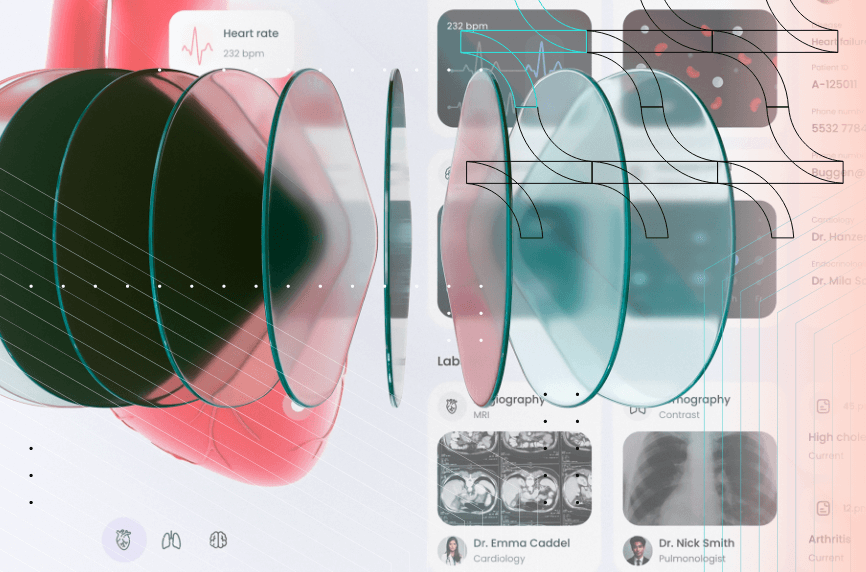Modernization can be intimidating. People often cling to familiar habits and the status quo, but change can arrive abruptly and forcefully. To achieve progress or respond to external demands, individuals must step out of their comfort zones and adapt to new ways of doing things.
The same applies to most organizations. Companies must embrace change and take proactive steps to modernize their operations to keep pace with the rapidly evolving IT industry. This approach is essential for creating greater value and developing more impactful applications.
Organizations that rely on legacy applications often find that maintaining outdated infrastructure stifles innovation and weakens their competitive edge. Implementing an effective modernization strategy allows these businesses to enhance their applications without disrupting critical operations.
When and how is it time for application modernisation
Modernization enables businesses to move beyond outdated legacy systems and adopt more flexible, scalable solutions. Application modernization companies help transform legacy applications into systems that meet current demands while ensuring critical operations remain uninterrupted.
Businesses can shift away from heavily coupled systems and move toward more agile, modular architectures by addressing the architectural reasons for inefficiencies. This approach not only makes applications more adaptable but also ensures they are ready to support future growth, whether through public or private cloud adoption.
Companies using modernization strategies like lift and shift can transform their infrastructure while preserving the integrity of their existing systems. This in turn prepares them for long-term success.
Application modernisation is not always about drastic changes or rebuilding software from scratch. While older systems, like those from the 1950s, may need complete replacements, most businesses benefit from targeted updates.
Legacy modernization strategies focus on transforming existing legacy applications to align with current business goals and enable them to leverage modern technologies. This process involves transforming existing applications to adapt to current technology trends. The focus often shifts from traditional desktop solutions to web and mobile platforms.
Many organizations embrace managed application modernisation solutions to guide them through this process and thus ensure minimal disruption and maximum operational efficiency during transitions. Hybrid cloud solutions, for instance, are increasingly popular for enterprises seeking to balance flexibility with security.
Effective modernisation preserves the unique qualities of an application while enhancing its capabilities. Software engineers often build on existing infrastructure and introduce improvements incrementally. Engineers ensure that existing systems can support modern business requirements without disrupting ongoing operations through the modernization process.
This method aligns with modernisation processes and makes sure that companies retain the core functionality of their systems while adapting to new demands.
Reasons to upgrade your legacy apps
Legacy applications might have served well in the past, but as technology and business needs evolve, they can hold companies back. Modernizing legacy applications opens a clear path to better performance, stronger security, and greater flexibility. It’s not just about keeping up—it’s about creating systems that can grow and adapt with your business.
Below are the main reasons why companies should consider modernizing applications.
Enhanced performance and scalability
Imagine an app designed to handle a few hundred users now struggling under the weight of thousands—or millions. That’s what happens with legacy systems. They weren’t built for the high-speed, high-demand digital world we live in today. Modernising these applications allows companies to breathe new life into their systems.
With cloud application modernisation, businesses can tap into the scalability of platforms like hybrid environments or a modern cloud platform. These environments adapt dynamically to fluctuating traffic unlike on premise environments.
Think of them as expandable highways—more lanes open as traffic increases. This makes sure that apps can meet user demands at every time, even during unexpected surges, without crashing. For companies operating in competitive markets, scalability becomes a game-changer.
Improved security and compliance
Application security often becomes the Achilles’ heel of legacy systems. Older software didn’t anticipate today’s sophisticated cyber threats, which in turn leaves gaping vulnerabilities. Modernisation steps in like a fortress upgrade—thicker walls, better locks, and an army of automated guards.
Companies can use built-in security features by a move to cloud native platforms. Regular updates and threat detection run in the background, and reduce human error. Compliance is another win.
Businesses modernising their apps align better with evolving industry regulations, especially in data-sensitive fields. For instance, healthcare apps using modern frameworks protect patient records while meeting strict privacy laws. In a world where data breaches make headlines, modernisation is more than a tech update—it’s a reputation shield.
Reduced maintenance costs
Maintaining outdated systems can feel like patching a sinking ship. Legacy apps often drain budgets, with companies spending up to 80% of IT resources just to keep them afloat. Modernisation, however, flips the equation in favour of cost optimization.
Businesses avoid the time consuming process of troubleshooting by adopting application modernisation tools. Modernised systems run more smoothly, with fewer hiccups. The shift also frees up IT operations teams to focus on innovation instead of endless fixes.
Think of it like upgrading from a flip phone to a smartphone—you’re not just reducing costs; you’re gaining tools that make life easier.
Integration with modern technologies
Legacy systems can feel like that one coworker who refuses to use email and still insists on faxes. Modernising your organization’s mission critical applications changes that dynamic. It creates systems that communicate effortlessly with existing systems, external services, and even cutting-edge technologies like containerized applications.
For example, integrating with virtual machines or adopting cloud migration enables apps to share data seamlessly. This connectivity becomes critical for businesses using diverse tools across departments.
Imagine a manufacturing company syncing real-time supply chain data with predictive analytics software—modernisation makes this possible. It’s about building bridges between systems, and ensuring smooth operations without compromising on innovation.
More successful digital transformation initiatives
Digital transformation is the buzzword for businesses trying to stay competitive. It’s not just a fancy term—it’s about reimagining how organizations operate in a digital-first world. Application modernisation plays a starring role in this shift.
Companies often deal with a monolithic application, which is tightly coupled and hard to adapt. Modernisation breaks these into smaller, more flexible containerized applications (which we discussed before) or cloud-ready services, which operate much better than monolithic applications.
This modular approach speeds up new feature delivery and aligns with broader digital transformation goals. For example, retailers modernising their legacy systems can introduce AI-powered recommendation engines or integrate with modern payment platforms, enhancing customer satisfaction while staying ahead of competitors.
A study by McKinsey showed that businesses undergoing digital transformation are 26% more profitable than those stuck in the past. Application modernisation isn’t just a tech upgrade; it’s a competitive edge.[1]
and satisfaction
You’ve probably quit using an app because it was slow or hard to navigate. You’re not alone—88% of users say they won’t return after a poor customer experience. Legacy systems often frustrate users with outdated designs and poor functionality. Application modernisation services address these issues by prioritizing user-friendly design. [2]
Take retail apps, for instance. When modernised, they allow faster checkout processes, personalized recommendations, and real-time inventory updates. Businesses keep users engaged and satisfied by simplifying these interactions. And with mobile now a dominant platform, apps must be responsive and intuitive across devices.
Fun fact: Every second of delay in loading an app can cost businesses up to 7% in conversions. Modernisation isn’t just about keeping up with trends; it’s about giving users a reason to stay. [3]
Leveraging cloud and DevOps capabilities
Cloud computing and DevOps aren’t just tech buzzwords—they’re tools for transformation. Application modernization strategies enable businesses to adopt hybrid cloud models, where critical workloads remain secure while other systems and processes scale on-demand. This flexibility allows companies to handle peak traffic without breaking a sweat.
DevOps, on the other hand, brings automation to the forefront. Think of it like a conveyor belt for software updates: faster, smoother, and less prone to errors. Companies that modernise their apps often adopt continuous delivery and ensure new features roll out seamlessly.
Here’s an example: a media company (RCS MediaGroup) modernising its apps with Google Cloud saw 20% savings on platform infrastructure cost and almost 100% stability, which kept viewers happy during live streaming events. These tools don’t just optimize processes; they redefine how businesses interact with their audience. [4]
Innovation and agility
Innovation isn’t just about inventing something entirely new; it’s about improving how things work and spotting opportunities others might miss.
For many businesses, legacy systems act as barriers, limiting flexibility and slowing down decision-making processes. When companies invest in enterprise application modernisation, they unlock the ability to move quickly, and experiment with bold ideas without being bogged down by outdated technology.
Picture a healthcare provider modernising their existing systems. The integration of application modernization tools opens a lot of new possibilities. They can deploy AI diagnostics or telemedicine platforms, which in turn expand their reach and improve patient outcomes. These innovations don’t just improve operations; they redefine entire industries.
Strategic application modernization is key to future-proofing systems. Heavily coupled architectures, which often impede scalability and innovation, are replaced with agile solutions like containerized applications.
This shift fosters a collaborative environment where legacy systems can coexist with modern platforms, driving long-term innovation and operational excellence.
Future-proof your business applications
Technology evolves faster than you can say “legacy systems.” Future-proofing applications ensures businesses aren’t left scrambling when new tech trends emerge. Modernize existing apps, and they’ll be ready to embrace key technologies like AI, IoT, or blockchain.
In our post 7 Vital Skills for Programmers to Have in the Next 5-10 Years we discussed what people working in the field must learn or enhance in order to stay abreast with what’s coming next.
And let’s not forget innovation at the micro level. Updating an app’s internal architecture or integrating it with key technologies ensures faster rollouts of new feature delivery. This keeps users engaged and competitors at bay.
Future-proofing isn’t optional anymore. It’s a strategic necessity for many organizations aiming to thrive in an ever-changing application landscape. Whether it’s adapting to multiple environments or leveraging the next big tech breakthrough, modernised systems position businesses to evolve, compete, and grow without skipping a beat.
Discover how we can help outsource Healthcare projects efficiently Speak to an expert today, and see how our on-demand IT talent and augmented teams can efficiently deliver value at every step of your roadmap.

Are there any risks during app modernisation?
Yes, app modernization carries certain risks, but they can be effectively managed with the right approach. Common risks include data loss, system downtime, security vulnerabilities, and compatibility issues during the transition.
However, when modernization is done at the right time, for the right reasons, and with the right tools and expertise, these risks are significantly reduced. In fact, modernization often strengthens software practices by enhancing performance, security, and efficiency.
One key risk arises during software migration—the shift from one operating environment to another—which can lead to operational disruptions if not carefully planned. As businesses move toward web- and mobile-based solutions, they must address potential challenges related to system integration, data security, and user adoption.
Despite these risks, the benefits of application modernization far outweigh the challenges.
Modernization processes breathe new life into legacy systems, enabling them to support modern business goals. Organizations can accelerate cloud adoption by adopting an architectural approach that incorporates hybrid and public cloud solutions, such as Microsoft Azure.
These strategies are what ensure that legacy application modernization aligns with long-term goals, reducing risks associated with outdated systems. Businesses can streamline transitions without losing core functionalities by utilizing process-driven ways, such as the lift and shift approach.
Ultimately, modernization isn’t just about updating old software—it’s about unlocking new potential. With careful planning, risk assessment, and the right execution, businesses can modernize applications successfully while safeguarding their operations.
Sources
[2] https://ecommercebonsai.com/ux-statistics/
[3] https://fleexy.dev/blog/how-page-speed-affects-conversion-rates-study/

















